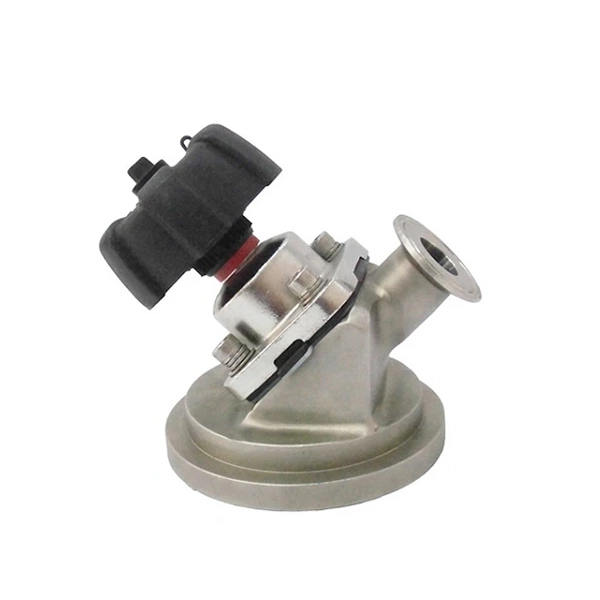Sanitary Stainless Steel Pneumatic U-Type Diaphragm Valve
Working principle of sanitary diaphragm valve:
The close fit between the valve body and the diaphragm provides valve body sealing and valve seat sealing, ensuring complete isolation between the inside of the pipeline and the external environment, so the valve is suitable for aseptic processes.
The opening and closing of the sanitary diaphragm valve is achieved by the up and down movement of the valve stem. When the valve stem is in the upper position, the spherical diaphragm bends upward to form a conducting state. When the valve stem moves from top to bottom, it drives the valve core to bend the diaphragm, forcing the diaphragm to fit tightly against the valve seat area or, thus closing the path to the pipeline fluid.
The valve can be operated manually, pneumatically, or controlled by an intelligent controller.
| Metal material | Parts in contact with the product | 316L(1.4404) Forged |
| Parts not in contact with the product | 304(1.4301) | |
| Sealing material | Standard | PTFE/EPDM composite diaphragm |
| Optional | EPDM, Silicone, and FPM are imported sealing materials, and all sealing materials comply with FDA 177.2600 |
|
| temperature | Continuous operating temperature | -20~+135℃(PTFE/EPDM) |
| Sterilization temperature | 150℃(Max20min) | |
| pressure | Work Pressure | 0~10bar |
| Control gas source pressure | 5~8bar | |
| Surface treatment | Internal surface treatment | Ra≤0.4μm (mirror polishing or electronic polishing) |
| External surface treatment | Shot peening | |
| connect | Connection Standards | Welding end: DIN 11866 Series 1 |
| Welding end: DIN11866 series 3 | ||
| Connection method: welding. thread. quick installation. flange | ||
| Optional | Intelligent Controller | 24V DC |
| 1 solenoid valve | ||
| Position Sensors | 24V DC | |
| 2 NPN or PNP position sensors | ||
According to the structural characteristics of the aseptic diaphragm valve: It is recommended to install it at a 30-degree angle, which is conducive to complete drainage after the valve is cleaned and is not likely to cause liquid to remain inside the valve.
Sanitary diaphragm valve structure:

Various structural forms can be customized according to customer needs






